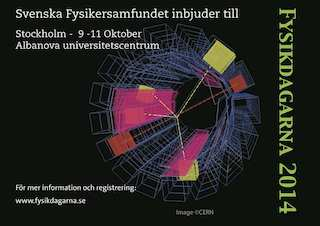Description
senaste forskningen
Prof.
Francis Halzen
(University of Wisconsin)
10/10/2014, 10:30
The IceCube project has transformed one cubic kilometer of natural Antarctic ice into a neutrino detector. The instrument detects 100,000 neutrinos per year in the GeV to PeV energy range. Among those, we have recently isolated a flux of high-energy cosmic neutrinos. I will discuss the instrument, the analysis of the data, and the significance of the discovery of cosmic neutrinos.
Jeffrey Scott Hangst
(Aarhus University (DK))
10/10/2014, 11:00
It has been just over 100 years since Niels Bohr proposed his famous model for the hydrogen atom. It is thus very exciting that we are now actually able to experimentally study antihydrogen - the antimatter equivalent of hydrogen. The question to be addressed is fundamental and profound: “Do matter and antimatter obey the same laws of physics?” The so-called Standard Model of fundamental...
